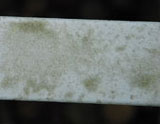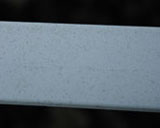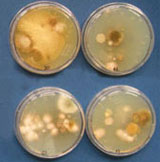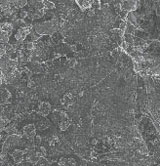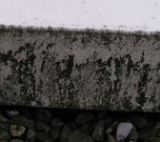
Facades of houses, traffic signs, public transport bus shelters and noise barriers: fungi, algae, mosses and lichens settle on them and colonize the man-made and man-used surfaces (Fig. 1). In many cases the actual construction material used to create these surfaces is irrelevant.
Often it is only a question of time before the colonization with macroscopically noticeable biofilms starts. Apart from the unattractive appearance they incur costs for cleaning, restoration or replacement. If the functionality of the objects concerned is greatly impaired by microbial growth, this may, in some cases, even cause safety hazards for users or the environment.
 Fraunhofer Institute for Interfacial Engineering and Biotechnology IGB
Fraunhofer Institute for Interfacial Engineering and Biotechnology IGB